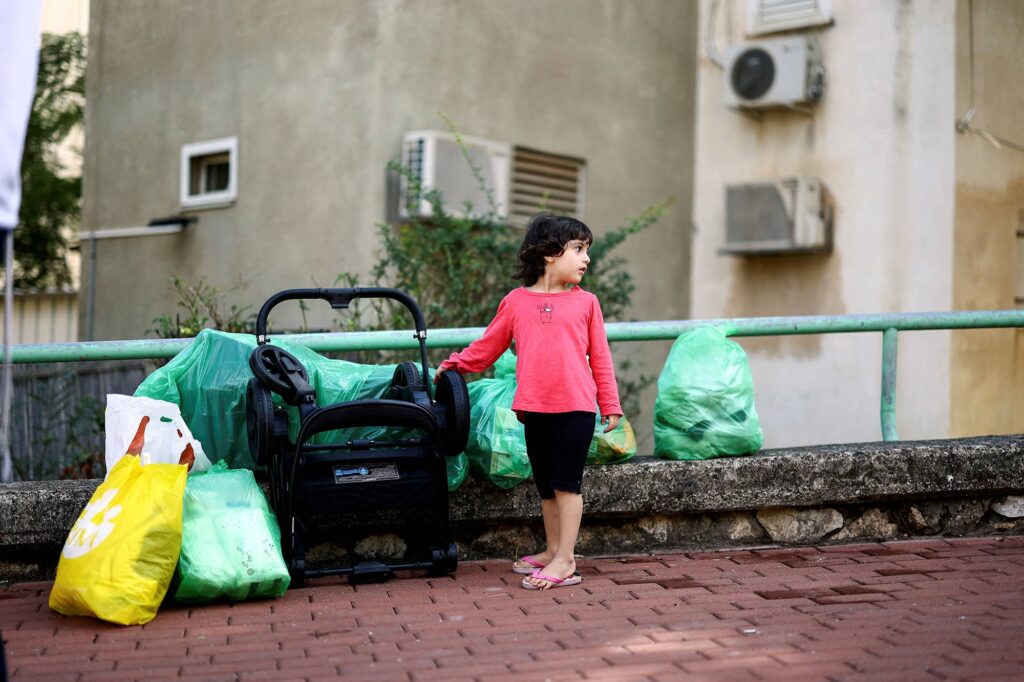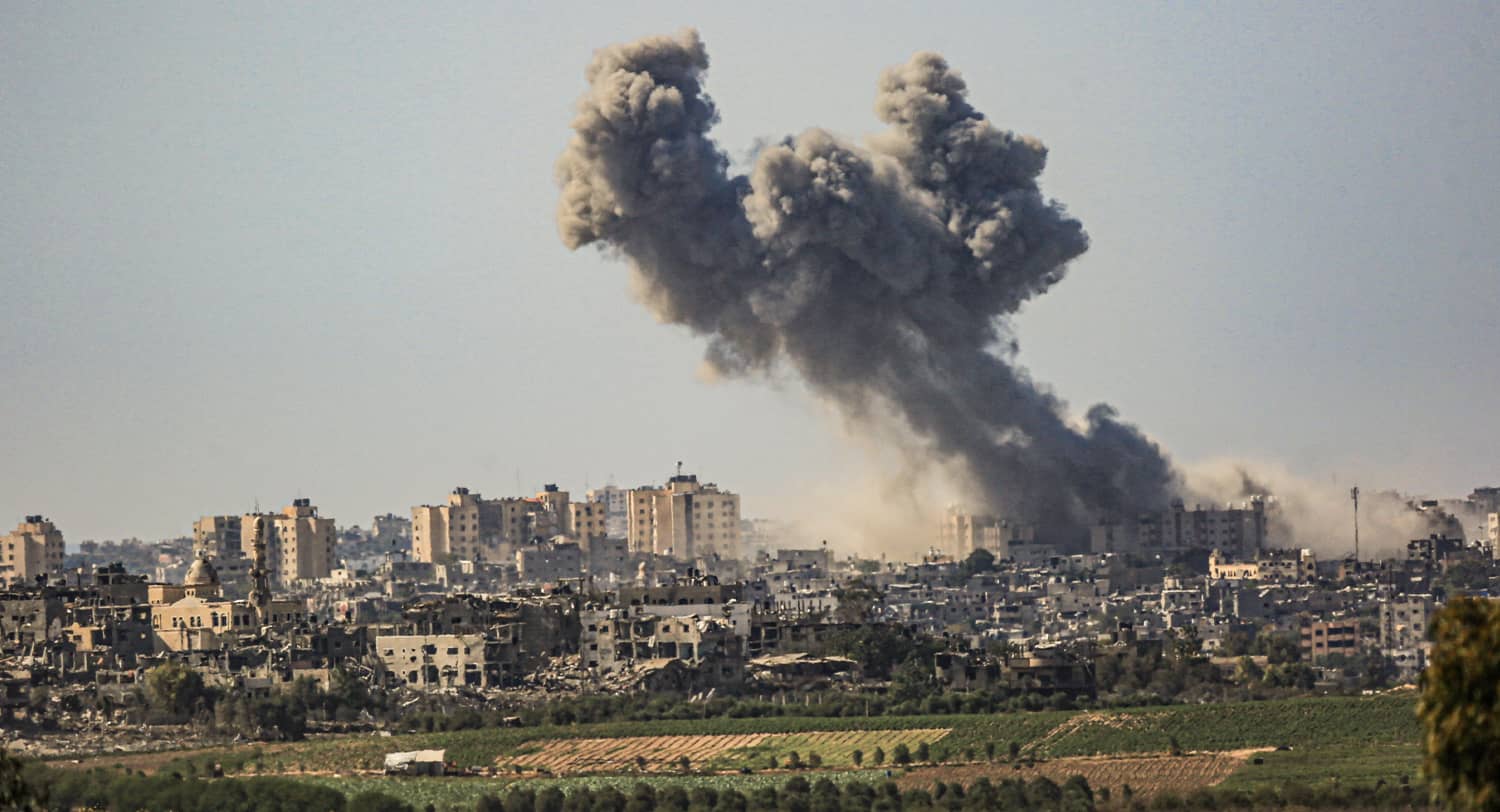The second week of the war between Hamas and Israel began on October 15 with expectations for a ground incursion into Gaza, and ended on October 22 with Israeli forces on the border of Gaza and the border of Lebanon continuing to wait and see.
>> Reports from the Gaza Front: Read more from Seth J. Frantzman
The first week of the war had brought horror and chaos as Hamas launched a surprise attack on October 7, massacring more than 1,000 civilians and kidnapping more than 200 people. The second week was spent continuing to identify the dead from the massacre, and preparing an army, now bolstered by an additional 300,000 reservists, to fight a multi-front war.
The full extent of the disaster on October 7 is still becoming clear. Personal stories from the border are harrowing. In one case, in the kibbutz of Kfar Aza, would-be rescuers took 14 hours to save children who were alone in a safe room. In other cases parents of soldiers who are either held hostage, or who were under siege by Hamas on the first day, have recounted a sense that there weren’t enough defenses on the border. Parents who fled places likes the border town of Ofakim are traumatized and wonder when they will be able to return home.
Israel continued to evacuate people from the border regions in the second week of the war. In addition to 25 small communities near the Gaza border (a total of 16,000 people), the city of Sderot (population 30,000) was also evacuated. I drove down to Sderot on October 16. The city, which had already felt like a ghost town in the first week of the war, now was completely deserted. One grocery store had its door half open but other than that the pretty town had no visible residents. The nice mall that is not far from the Gaza border at the entrance to the city has an empty parking lot. The new apartment buildings, built as a signal that the city feels safe and secure, are empty. Families have been sent to hotels near the Dead Sea and elsewhere. Many men are called up to the reserves.

Sderot’s community center was a coordinating point for volunteers in the first week of war but is now mostly empty. The volunteers have moved on. Some signed up to pick tomatoes and other crops around the Gaza border, left abandoned by the communities forced to evacuate. Foreign workers who work in the farming communities were also massacred by Hamas and some were kidnapped.
On October 18, I drove to northern Israel to see the second front against Hezbollah. The northern Galilee is beautiful this time of year, before winter sets in. The billowing clouds gather high in the sky and loiter over the hills. For Israel the security here lies in these hills along the Lebanese border. Israel controls much of the high ground, but often Israeli communities are built right along the border. They tend to face fields and orchards and Hizbollah posts on adjoining hills. In 2006, a Hizbollah ambush near the Israeli community of Shtula led to the abduction of the bodies of two Israeli soldiers and then a large Israeli military incursion into Lebanon. Today Hezbollah has been carrying out daily anti-tank fire along the border, as well as using rockets, mortars and small-arms fire.
I drove up to Rosh HaNikra, the coastal tourist spot on the border. In the Mediterranean below, an Israeli naval vessel patrols the waters. Soldiers told people that this was now a closed military zone. I drove on toward Hanita, and Shlomi and other communities here that had been evacuated. Israel evacuated 28 communities initially, and then evacuated 14 more and the city of Kiryat Shmona. This includes some 61,000 people.

The moshav (farming community) of Shtula sits adjacent to the Lebanese border. There I met with the local security, older men, Kurdish Jews, who have lived here since 1969 when this place was founded. Now the moshav has soldiers in the streets. The security guys are members of the community and now they cradle M-4 rifles and guard the entrance to the moshav. They have to make sure no one suspicious enters, such as looters or perhaps people spying for terrorist groups. They have done this before in previous conflicts.
In the late 1960s, this area was peaceful. But in the 1970s the PLO came from Jordan to the hills of south Lebanon that Hezbollah now occupies. After 1982, the PLO left but Hezbollah grew in its place. Jews here once went to Lebanon to buy food and even play soccer. However the arrival of Hezbollah changed things. Lebanese Shi’ites, who once greeted Israeli tanks with flowers to celebrate the PLO being removed in 1982, now are under the control of Hezbollah.
I drove on from Shtula, and as I drove reports said there was anti-tank fire in the area and rocket fire. The hills shield one from hearing the attacks. But outgoing artillery can be heard. In the border town of Kiryat Shmona (population 22,000) only one restaurant was open.It was also largely deserted. A rocket had impacted before I arrived. There were wounded.
The next day Kiryat Shmona was evacuated. I had been one of the last to arrive and go apparently.
Israel is now preparing for a two-front war. The military brass has told soldiers that Hamas will be removed from Gaza. However, the air force is still being used to prepare the ground. Hundreds of Hamas targets were struck overnight on October 22. In addition Iranian proxies continue to threaten US forces in Iraq and Syria. The US has sent additional air defense to the region. The US and Israel now await Iran’s next move and must consider what the next phase will bring for Israel in Gaza.
>> Reports from the Gaza Front: Read more from Seth J. Frantzman

